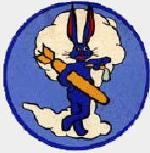Corgi AA39915 USAAF Boeing B-17F Flying Fortress Heavy Bomber, 'Ye Olde Pub', 379th Bombardment Group, RAF Kimbolton and German Messerschmitt Bf 109G-6 Fighter, Franz Stigler, Jagdgeschwader 27 (1:72 Scale)
"Well, I can tell you right now what the problem is. I saw it in your faces last night. I can see it there now. You've been looking at a lot of air lately, and you feel you need a rest. In short, you're feeling sorry for yourselves. Now I don't have a lot of patience with this "What are we fighting for?" stuff. We're in a war, a shooting war. We've got to fight. And some of us have got to die!"
- General Frank Savage, from the feature film "Twelve O'Clock High"
 The B-17, arguably World War II's most famous heavy bomber, first flew on July 28th, 1935, before a crowd of reporters eager to see Boeing's new bomber take wing. It was dubbed the "Flying Fortress" by the members of the press in attendance because of its (at least for the time) heavy defensive armament. The prototype crashed in October, but because of its impressive speed and handling the US Army Air Corps (USAAC) decided to continue testing anyway. They ordered 13 YB-17s for further evaluation, a decision that would prove momentous in years to come.
The B-17, arguably World War II's most famous heavy bomber, first flew on July 28th, 1935, before a crowd of reporters eager to see Boeing's new bomber take wing. It was dubbed the "Flying Fortress" by the members of the press in attendance because of its (at least for the time) heavy defensive armament. The prototype crashed in October, but because of its impressive speed and handling the US Army Air Corps (USAAC) decided to continue testing anyway. They ordered 13 YB-17s for further evaluation, a decision that would prove momentous in years to come.
The YB-17 had five machine guns, room for 4,800 pounds of bombs and a crew of nine. It had electrically retractable landing gear. After testing the YB-17, an improved prototype, the Y1B-17, was built with Wright Cyclone radial engines. Twelve were delivered to the USAAC's 2nd Bombardment Group for trials. One of these was soon equipped with new Moss/General Electric turbochargers that became standard on all future Flying Fortresses. The first production order was for 39 B-17Bs with turbo-charged engines, and as soon as these were under production another order for the B-17C was placed, with seven machine guns instead of the original five.
The RAF received their first B-17Cs in 1941, and were soon conducting daylight raids over Germany. The defensive armament soon proved inadequate, and the B-17's altitude was little defense against the German fighters. Orders for the B-17D were soon placed with self-sealing fuel tanks and more armor because of lessons learned in bombing missions over Europe. The B-17E and B-17F soon followed with larger tail. The B-17F was the first to serve with the USAAF 8th Air Force. After suffering staggering losses in late 1943, analysis proved head-on attacks by enemy fighters were a distinct problem. The final major version, the B-17G, added a chin turret with dual machineguns. This gave the B-17 a defensive armament of 13 guns.
After the war, several dozen B-17s lived on as fire-bombers and aerial surveyors until the last one was retired in the 1970s. Today, a few B-17s have been restored to their wartime splendor. Ten are currently flying in the United States, one in the UK and another one in France. Features extremely high level of details including full crew, rotating gun turrets, working undercarriage, and bomb load.
Pictured here is a 1:72 scale USAAF Boeing B-17F Flying Fortress heavy bomber and German Messerschmitt Bf109G-6 fighter that was piloted by Franz Stigler.
Sold Out!
B-17 Dimensions:
Wingspan: 17-1/2-inches
Length: 12-1/4-inches
Bf 109 Dimensions:
Wingspan: 5-1/2-inches
Length: 5-inches
Release Date: September 2013
 Historical Account: "Headed Home" - On December 20th, 1943, 2nd Lt. Charlie Brown embarked upon his first mission over enemy territory, the bombing of the Focke-Wulf factory at Bremen. While the route to the target was relatively routine, once over it the mission ran into problems. Accurate flak smashed the Plexiglas nose, knocked out the number 2 engine and damaged engine number 4. Brown was forced to slow the bomber, dropping out of formation and becoming a straggler, a very vulnerable position for the aircraft.
Historical Account: "Headed Home" - On December 20th, 1943, 2nd Lt. Charlie Brown embarked upon his first mission over enemy territory, the bombing of the Focke-Wulf factory at Bremen. While the route to the target was relatively routine, once over it the mission ran into problems. Accurate flak smashed the Plexiglas nose, knocked out the number 2 engine and damaged engine number 4. Brown was forced to slow the bomber, dropping out of formation and becoming a straggler, a very vulnerable position for the aircraft.
The bomber then came under sustained enemy fighter attacks, number 3 engine was damaged along with the internal oxygen, hydraulic and electrical systems and only the dorsal turret and one nose gun were still serviceable. Of the crew, most were injured, Brown had been shot in the shoulder and the tail gunner had been killed.
The final fighter to intercept the plane was flown by Franz Stigler, who, upon seeing the damage to the B-17 and the wounded crew visible inside through the holes, decided not to shoot them down. Instead, after failing to persuade them to land, he escorted them to the coast, at which point Stigler saluted and flew home. Brown landed safely but was told to tell no one of the Germans actions. Both Stigler and Brown survived the war and in the late 1980s Brown tracked down Stigler discovering that he lived just a few hundred miles from him, having moved to Vancouver after the war. They met in late 1990 and remained friends until their deaths just a few months apart in 1998.








